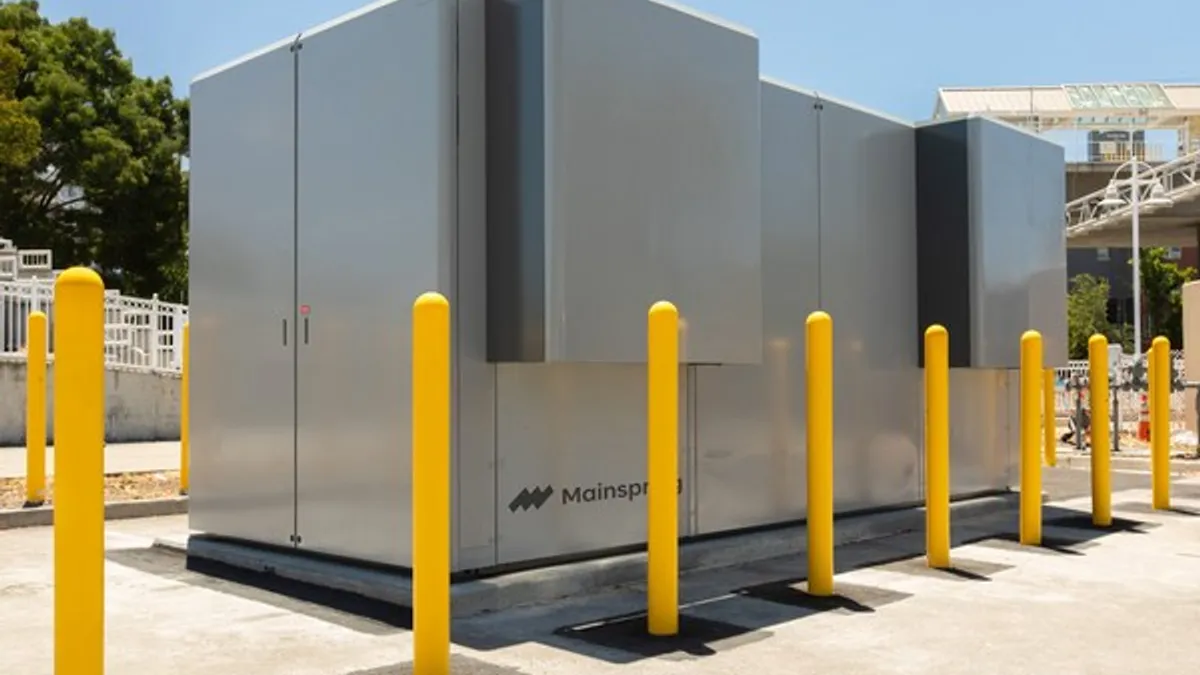Dive Brief:
- Schneider Electric is integrating Mainspring Energy’s power generation technology with its microgrid solution to provide power, energy resiliency and fuel flexibility for commercial and industrial customers.
- Combining Schneider Electric’s EcoStruxure Microgrid solution and design-build services with Mainspring’s Linear Generator will help businesses, like data centers and healthcare facilities, to efficiently generate electricity on-site and operate in parallel to the power grid or independently from the grid when needed, the companies said in a March 20 news release.
- Addressing power needs through traditional utilities is becoming increasingly expensive and time-consuming, Bala Vinayagam, senior vice president of the microgrid line of business at Schneider Electric, told Facilities Dive. “Mainspring’s fuel-agnostic generators, coupled with our standardized Microgrid Flex architecture, deliver a sustainable, agile and scalable infrastructure solution. This empowers customers to address their evolving power needs,” he said.
Dive Insight:
The U.S. Energy Information Administration forecasts that energy consumption will increase through 2050, outpacing energy efficiency gains. Healthcare facilities, for example, consume more electricity to meet the demands of energy-intensive apparatus, like medical imaging machines and medical devices. Due to the growing use of generative AI and digital twin technologies, data centers are also expected to require more energy for higher computational power and cooling requirements due to projected increases in rack intensity — the amount of computing equipment installed and operated in a single server rack.
A report from JLL suggests that microgrids can play a critical role in alleviating the pressure of electrifying systems, ensuring an uninterrupted energy supply and mitigating climate risk. These benefits, the real estate services firm notes, are especially important as power grids strain to meet rising electricity demand.
To combat these challenges, the Schneider Electric-Mainspring Microgrid Solution enables customers to “power their self-contained electrical network and integrate clean on-site generation” with renewables and the grid, according to the release.
Schneider Electric’s Microgrid Flex is a pre-engineered and fully tested system that incorporates technologies like distributed energy resources, battery storage, electrical distribution and advanced control and energy management systems, Vinayagam said.
“Commercial and industrial facilities are dealing with increased demands for electricity. At the same time, organizations needing power have decarbonization goals,” Schneider Electric North America Microgrid President Jana Gerber said in the release. Gerber noted that Mainspring’s Linear Generator technology can help these businesses achieve net-zero emissions amid “an evolving grid landscape.”
Mainspring Energy says its Linear Generator can run on various fuel types, including renewables like biofuels, green ammonia and green hydrogen. As clean fuels become increasingly available and more cost-effective, the Linear Generator’s flexibility allows facilities to meet their energy needs, without expensive replacements or retrofits of existing equipment, Mainspring CEO Shannon Miller said in a statement.
The Mainspring generator’s fuel flexibility also allows customers to switch between multiple fuel options, including low- and zero-carbon fuels, the companies said.
“Customers can take advantage of the most cost-effective fuel source depending on market prices and resourcing,” Vinayagam said, adding that Mainspring’s ability to act as a dispatchable load allows customers to use renewable energy for power and act as a backup when the grid is down.
The partnership will involve providing power solutions in tandem with Schneider’s microgrid designs, construction management and project management expertise, helping businesses generate cost savings and meet their sustainability goals, per the release. Decentralizing power for data centers and healthcare facilities also ensures that these facilities have enough electricity to power critical operations and cut greenhouse gas emissions, the release noted.














